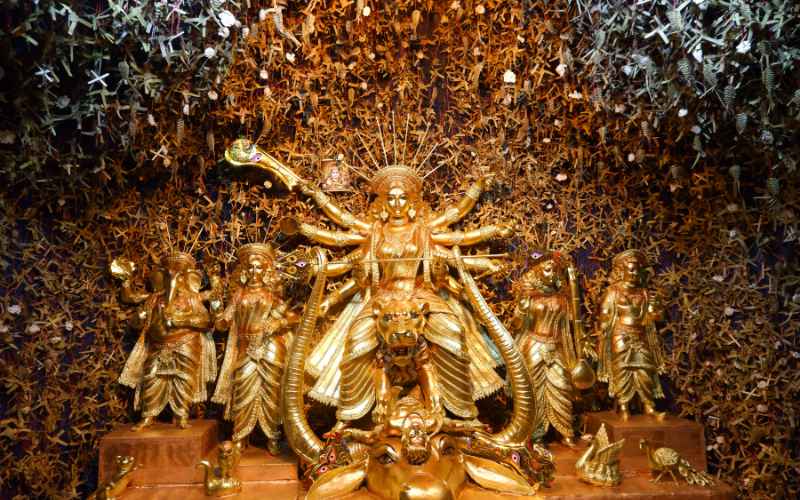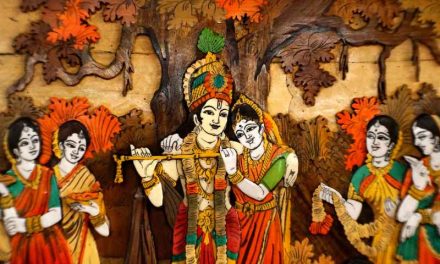In the vast expanse of Hindu philosophy and spirituality, one symbol stands out as a universal and timeless representation of the divine: the sacred Om (or Aum). While the Om symbol finds its roots in various ancient texts and practices, its significance in the Katha Upanishad is particularly profound. This symbol encapsulates the essence of the Upanishad’s teachings and offers a gateway to understanding the deeper mysteries of existence.
The Essence of the Katha Upanishad
The Katha Upanishad, a dialogue between a young seeker named Nachiketa and the god of death, Yama, explores the nature of the self (Atman) and the ultimate reality (Brahman). It delves into the impermanence of life and the eternal nature of the soul. The symbol “Om” plays a pivotal role in this exploration.
The Om Symbol: A Cosmic Vibration
In the Katha Upanishad, “Om” is described as the primordial sound that underlies the universe’s creation. It is the sound that existed before the universe came into being and the sound that will continue after its dissolution. This resonating sound symbolizes the eternal, unchanging reality (Brahman) that lies beyond the transient world. It is often said that the entire universe emerges from and dissolves into this cosmic vibration, making “Om” a representation of both the manifest and the unmanifest.
The Three Elements of “Om”
“Om” is composed of three elemental sounds: A, U, and M. Each of these elements has its own unique significance.
- A (Akaar): This represents the waking state (Jagrat). It symbolizes the gross realm, the physical world that we perceive through our senses. In the Katha Upanishad, it signifies the external world we encounter daily.
- U (Ukaar): This represents the dream state (Swapna). It signifies the subtle realm—the world of dreams and imagination. In the context of the Upanishad, it represents the internal world of thoughts, desires, and emotions.
- M (Makaar): This represents the deep sleep state (Sushupti). It symbolizes a state of profound rest and silence. In the Katha Upanishad, it represents the state of transcendence, where the individual self merges with the universal self.
The combination of these three sounds, “A,” “U,” and “M,” leads to the fourth element:
- The Silence (Turiya): The silence that follows the chanting of “Om” signifies the state beyond the three states of consciousness (waking, dreaming, and deep sleep). It represents the ultimate reality, Brahman, which is beyond words and concepts.
The Om Symbol’s Role in Meditation
The Om symbol serves as a powerful tool in meditation and spiritual practice. Chanting “Om” allows practitioners to connect with the essence of the Katha Upanishad’s teachings. It enables them to move beyond the distractions of the external world (Akaar) and the internal fluctuations of the mind (Ukaar) to reach a state of deep inner stillness and self-realization (Makaar).
Meditating on the Om symbol can help individuals experience the oneness of their individual self (Atman) with the universal self (Brahman). This aligns with the central theme of the Katha Upanishad, where Nachiketa seeks to understand the nature of the self and its relationship to the divine.
Om Symbol and Practical Application
The significance of the Om symbol extends beyond the realm of philosophy and meditation. It has practical applications in everyday life. Chanting “Om” can serve as a form of stress relief and relaxation, helping individuals find peace and balance amid the chaos of the modern world. Moreover, it can deepen one’s connection to their inner self and promote self-awareness.
The Material Pursuit
In a consumer-driven society, we are bombarded with messages that equate happiness with the accumulation of wealth, possessions, and external achievements. This approach, often referred to as materialism, promises happiness through the acquisition of things. However, the Katha Upanishad encourages us to pause and reflect on the transient nature of material wealth.
The Teachings of Nachiketa
At the heart of the Katha Upanishad is the dialogue between Nachiketa, a young seeker, and Yama, the god of death. Nachiketa’s quest for knowledge and truth takes him to the realm of Yama, where he seeks answers to profound questions about life, death, and the nature of the self. His story is a powerful reminder that there is more to life than the superficial pursuit of material pleasures.
The Quest for Immortality
Nachiketa’s inquiry delves deep into the essence of existence. He questions the impermanence of material possessions and seeks knowledge of the eternal. In doing so, he echoes a central theme of the Katha Upanishad—the pursuit of immortality, not in the literal sense, but in transcending the cycle of birth and death, in realizing the unchanging truth that underlies the changing world.
The Self and True Happiness
The Upanishad teaches that true happiness is not found in the external world but within oneself. It introduces the concept of Atman, the eternal self that transcends the physical body. This self is beyond the reach of decay and death, and it is the source of lasting happiness.
By understanding and realizing the Atman, the Katha Upanishad suggests that we can find a happiness that is unshaken by the ups and downs of life, by the accumulation or loss of material possessions. It encourages us to look inward, to embark on a journey of self-discovery, and to recognize our divine nature.
The Futility of Materialism
The Katha Upanishad’s teachings challenge the modern emphasis on external success and the ceaseless quest for more. It points out the futility of materialism, where the pursuit of possessions often leads to stress, anxiety, and a sense of emptiness. The temporary highs of acquiring the latest gadget or achieving a certain status pale in comparison to the deep and abiding contentment that comes from realizing one’s true nature.
A Path to Inner Fulfillment
The Upanishad does not reject material well-being but emphasizes that it is not the ultimate source of happiness. It invites us to balance our material pursuits with the quest for self-realization, for in understanding the self, we can find true and enduring contentment. It encourages practices such as meditation, introspection, and self-inquiry as paths to inner fulfillment.
The Timeless Message of the Katha Upanishad
The message of the Katha Upanishad is as relevant today as it was thousands of years ago. In an age characterized by the relentless pursuit of material success, it reminds us of the importance of seeking happiness that is not dependent on external circumstances. It calls on us to question the status quo, to explore the depths of our own being, and to discover the abiding joy that comes from realizing the true self.
In summary, the AUM symbol holds a profound significance in the Katha Upanishad and Hindu philosophy as a whole. It represents the fundamental sound of the universe and the connection between the individual self and the universal reality. By understanding and meditating on “Om,” individuals can embark on a spiritual journey that mirrors the profound teachings of the Upanishad itself, leading them from the transient to the eternal, from the material to the spiritual.





